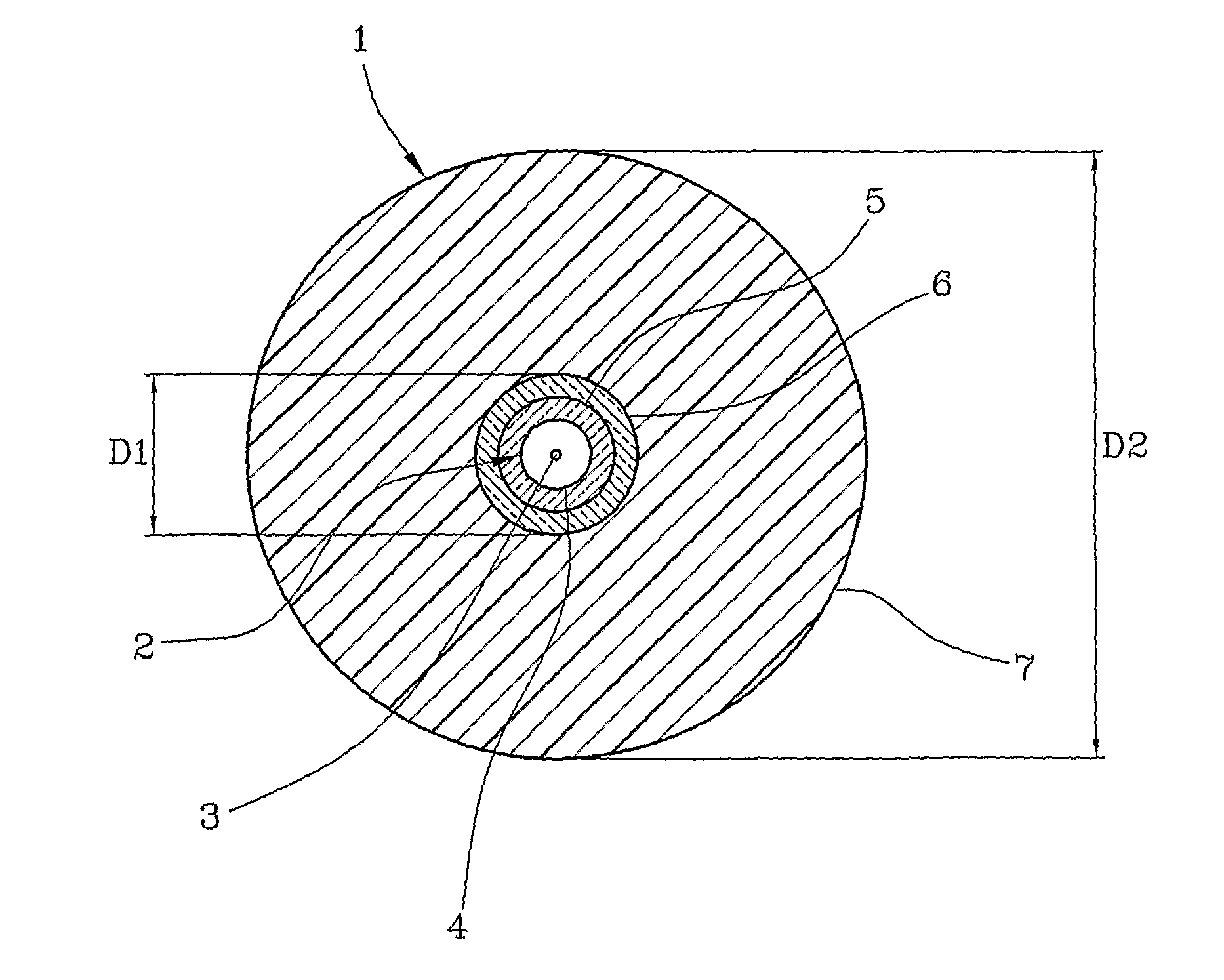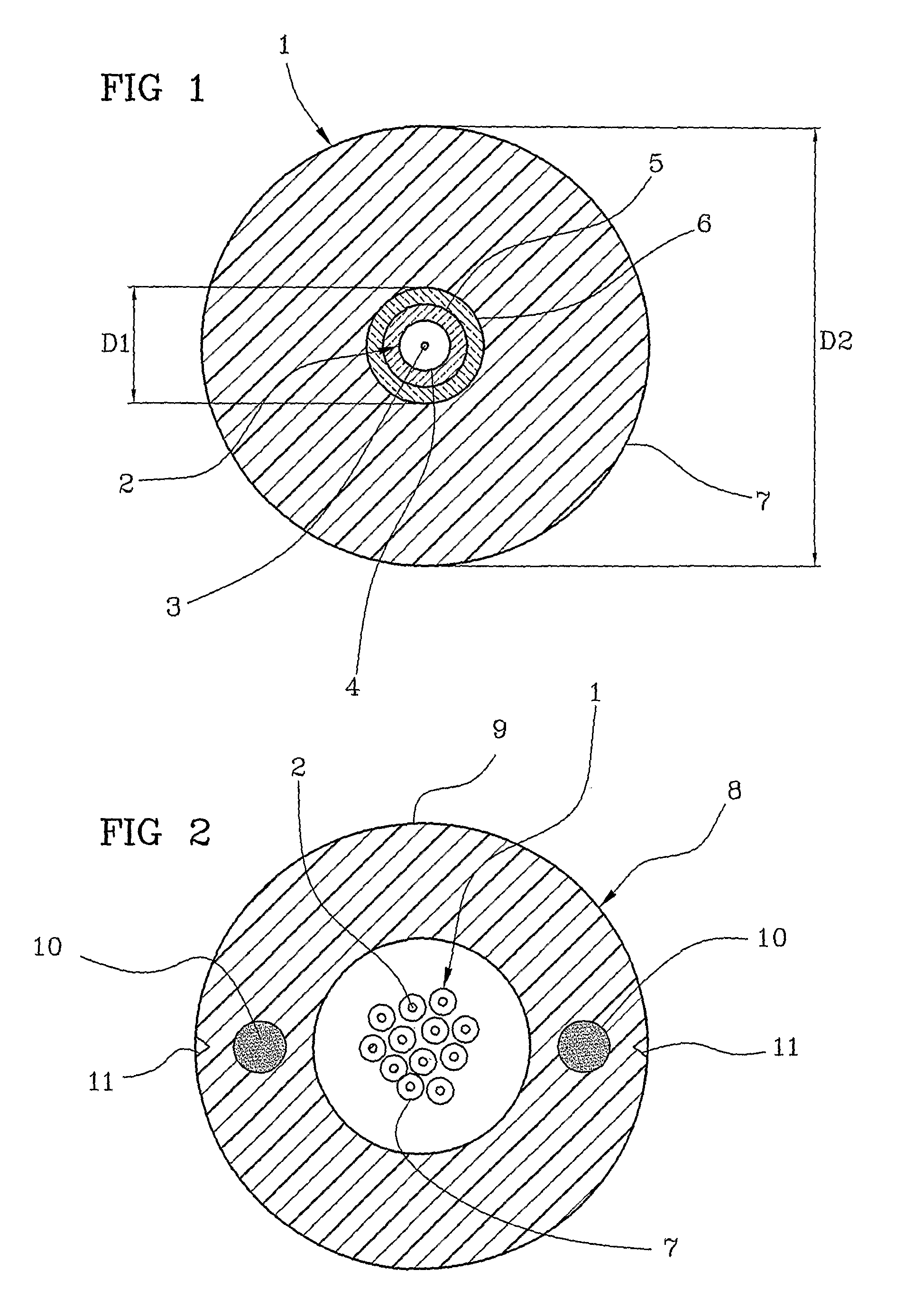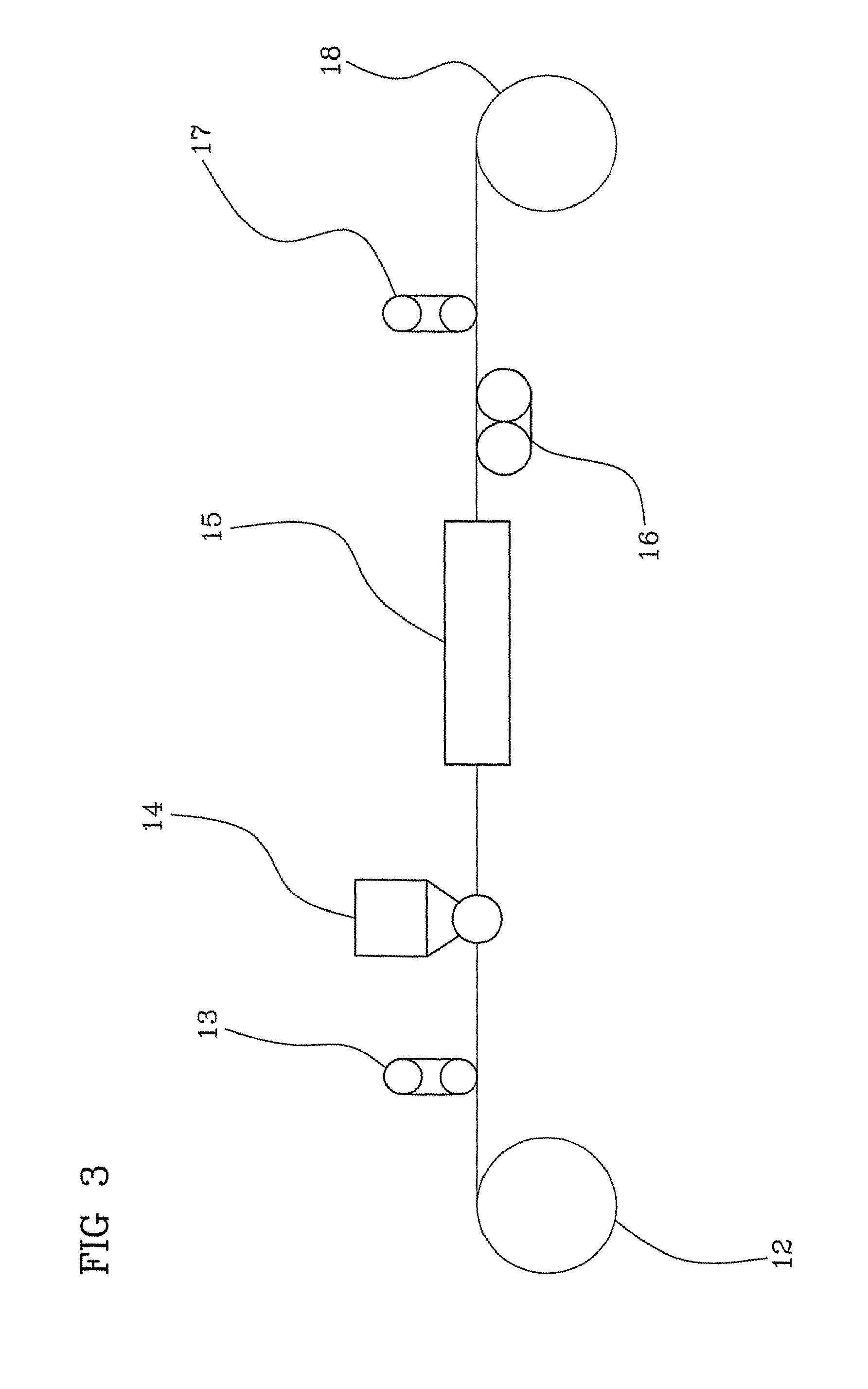Telecommunication cable equipped with tight-buffered optical fibers
a technology of optical fibers and telecommunication cables, applied in the field of telecommunication cables, can solve the problems of damage to optical fibers, difficult stripping of due lengths, and special tools and installation skills, and achieve the effect of reducing field labor and installation skill
- Summary
- Abstract
- Description
- Claims
- Application Information
AI Technical Summary
Benefits of technology
Problems solved by technology
Method used
Image
Examples
example 1
Preparation of a Polymeric Composition
[0065]A polymeric composition were prepared by using the components as shown in Table 1 (the amounts are expressed as % by weight with respect to the total weight of the polymeric composition).
[0066]
TABLE 1Componentwt %Lotryl ® 17BA0730.2Lotryl ® 30BA027.1Clearflex ® CLB010.1Fusabond ® MC 250D3Hydrofy ® GS 1.547.2Rhodorsil ® GUM 9012Irganox ® 10100.4Lotryl ® 17BA07 (Atofina): copolymer ethylene-butyl acrylate containing 16% to 19% by weight of acrylic ester;Lotryl ® 30BA02 (Atofina): copolymer ethylene-butyl acrylate containing 28% to 32% by weight of acrylic ester;Clearflex ® CLB0 (Polimeri Europa): very low density polyethylene;Fusabond ® MC 250D (DuPont): ethylene-vinyl acetate (28% vinyl acetate);Hydrofy ® GS1.5 (Sima): magnesium hydroxide coated with stearic acid;Rhodorsil ® GUM 901 (Rhodia): dimethylsiloxane, methyl vinyl terminated gum;Irganox ® 1010 (Ciba Specialty Chemicals): phenolic antioxidant.
[0067]The composition were prepared by m...
example 2
Preparation of a Tight Buffer Optical Fiber
[0070]The polymeric composition as prepared in Example 1 was applied by extrusion onto an optical fiber having an overall diameter of 245±5 μm, with a primary coating having a thickness of 32.5 μm and a secondary coating having a thickness of 27.5 μm.
[0071]The operating conditions of the extruding line were the following:[0072]conic tip inner diameter: 0.45 mm;[0073]conic tip outer diameter: 0.90 mm;[0074]conic die inner diameter: 1.90 mm;[0075]vacuum: −0.1 bar[0076]line speed: 60 m / min;[0077]thermal profile: 125° C. (zone 1), 140° C. (zone 2), 150° C. (zone 3), 160° C. (collar), 165° C. (head);[0078]cooling trough: air at 25° C.;[0079]fibre pay off tension: 100 g[0080]buffered fibre take-up tension: 200 g
[0081]The so obtained buffered optical fiber had an external diameter of 900 μm.
[0082]The following measurements were made on the buffered optical fiber (mean values calculated from nine tested samples):[0083]average strip force: 0.22 N / 15...
example 3
Manual Stripping Test
[0094]Five buffered optical fibers according to the invention coming from different production batches were employed for the test. The buffer layers were manually stripped-off the fibers by the same operator at increasing lengths starting from 10 cm. All of the five optical fibers were easily deprived of the buffer thereof until a length of 50 cm. At a length of 90 cm the buffer of two optical fibers could not be stripped off. For the remaining three, the coherence between buffer and optical fiber (impeding the buffer stripping-off) was reached at 120 cm (two fibers) and 130 cm (one fiber).
PUM
| Property | Measurement | Unit |
|---|---|---|
| ultimate tensile strength | aaaaa | aaaaa |
| ultimate elongation | aaaaa | aaaaa |
| diameter | aaaaa | aaaaa |
Abstract
Description
Claims
Application Information
 Login to View More
Login to View More - R&D
- Intellectual Property
- Life Sciences
- Materials
- Tech Scout
- Unparalleled Data Quality
- Higher Quality Content
- 60% Fewer Hallucinations
Browse by: Latest US Patents, China's latest patents, Technical Efficacy Thesaurus, Application Domain, Technology Topic, Popular Technical Reports.
© 2025 PatSnap. All rights reserved.Legal|Privacy policy|Modern Slavery Act Transparency Statement|Sitemap|About US| Contact US: help@patsnap.com



